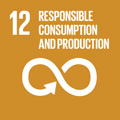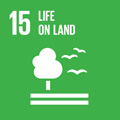- Docente: Antonio Curci
- Credits: 6
- SSD: BIO/08
- Language: Italian
- Teaching Mode: Traditional lectures
- Campus: Ravenna
-
Corso:
Second cycle degree programme (LM) in
History, preservation and enhancement of artistic and archaeological heritage and landscape (cod. 9218)
Also valid for Second cycle degree programme (LM) in History, preservation and enhancement of artistic and archaeological heritage and landscape (cod. 9218)
Second cycle degree programme (LM) in History, preservation and enhancement of artistic and archaeological heritage and landscape (cod. 9218)
Learning outcomes
After completing the course the student, through a theoretichal and practical approach, will know how to deal with the biological remains from an archaeological excavation. He/She will be able to analyze the botanical and faunal remains in order to understand the relationship between people and the environment during the past. The student, at the end of the course, acquires specific skills about the methodologies for the integrated reconstruction of the subsistence strategies and resource use.
Course contents
- Theory and methods in Bioarchaeology
- Quaternary Chronology
- Exploitation of Plants and Animals during the past
- Archaeothanatology: The Archaeology of death
- Domestication
Readings/Bibliography
J. DE GROSSI MAZZORIN, Archeozoologia, Laterza 2009
A. GIROD, Appunti di Archeomalacologia, All'Insegna del Giglio, 2015
G. DI PASQUALE, Che cos'è l'archeobotanica, Carocci 2011
H. DUDAY, Lezioni di Archeotanatologia, Roma 2006
Teaching methods
The course is based on lectures dealing with the program topics.
Assessment methods
The evaluation consists of an oral exam on the course program. The student must show that he/she has acquired adequate general and systematic knowledge of the various topics and has mastered the scientific and methodological tools necessary for a reasoned analysis of the program subjects.
Gradation of the final grade
A very thorough knowledge of the topics addressed in the course program, together with high skills of critical analysis, ability to use specific archaeological terminology will be evaluated with the maximum score (30-30 cum laude).
A thorough knowledge of the topics addressed in the course program, together with good analytical and critical skills, proficiency of specific archeological terminology will be evaluated with good marks (27-29).
Relatively adequate preparation and sufficient analytical skills, even if not particularly articulated, expressed in correct language, will produce fair evaluations (23-26).
Sufficient preparation and analytical skills, expressed in barely formally correct language, will determine the sufficiency (18-22)Teaching tools
Lectures will be illustrated with powerpoint presentations
Office hours
See the website of Antonio Curci
SDGs


This teaching activity contributes to the achievement of the Sustainable Development Goals of the UN 2030 Agenda.
